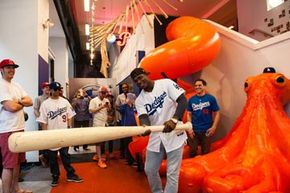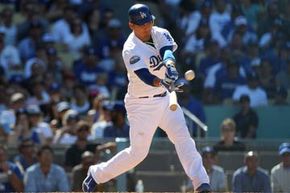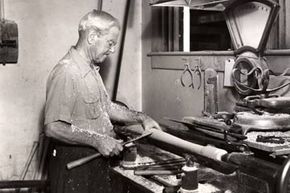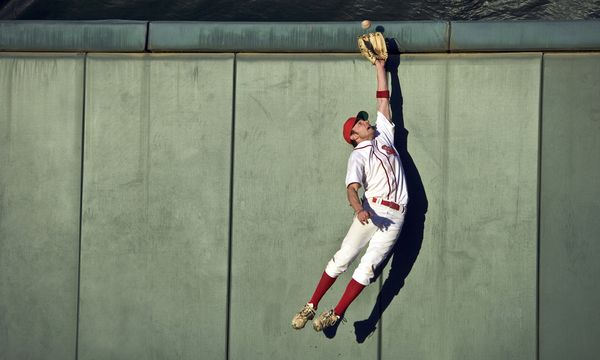In the classic 1984 baseball film "The Natural," protagonist Roy Hobbs—portrayed by Robert Redford — performs prodigious feats of hitting with "Wonderboy," a magical bat emblazoned with a lightning bolt, which he carved as a boy from a tree that was struck by lightning. "I wanted it to be a very special bat," he explains to his coach [source: Script-o-rama].
Hobbs' attachment to Wonderboy might seem like fictional license, but when it comes to ballplayers' characteristic fixation with their favorite bats, it's not really all that far from reality. Shoeless Joe Jackson, famous for playing for the Chicago White Sox team that fixed the 1919 World Series, favored an extra-large, custom bat, which he called Black Betsy [source: Martinez].
Advertisement
In the 1920s, Babe Ruth once got himself out of a slump by switching to a bat that was made of four pieces of wood glued together, which had a peculiar sideways grain—that is, until the baseball commissioner ruled that his new piece of equipment was illegal, which prompted a national controversy. (The problem was not the different wood but the glue which apparently increased the speed of the ball off the bat) [source: Montville].
Richie Ashburn, the slap-hitting 1950s Philadelphia Phillies outfielder, took to sleeping with his favorite bat in an effort to prolong a hitting streak [source: Morrison]. New York Yankees' star Ichiro Suzuki, a two-time American League batting champ who, as of 2013, holds the Major League record for most hits in a season with 262, reportedly keeps his favorite bat in a silver case [source: Morrison].
What is it that makes the bat — or rather, a particular bat — so important to a baseball player? Players need a bat in their hands to get on base and to score runs, but that's only part of the fixation. The bat is one piece of equipment that a player can customize to suit his playing style and physical attributes, and the right bat can give a slight but perhaps crucial edge in a sport where even the best hitters only succeed three out of every 10 trips to the plate. In this article, we'll get into how the nuances of bat design can give players an edge, and the physics behind what happens when bat meets ball. But first, here's a brief history of the baseball bat.
Advertisement





